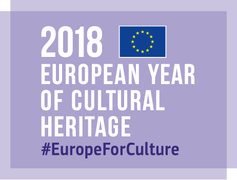Celebrating Music Manuscripts and the European Year of Cultural Heritage
Monday, June 25, 2018

The year 2018 has been named the European Year of Cultural Heritage. Throughout the continent, the focus is on cultural heritage as expressed in a wide variety of manifestations: monuments, books, clothing, historic towns, oral traditions, landscapes, digitized objects—even performing arts and music—and much more. The goal is to “encourage more people to discover and engage with Europe’s cultural heritage, and to reinforce a sense of belonging to a common European space.”
Music plays a big role in defining culture and indeed the importance of music has been acknowledged in a number of EU and UNESCO initiatives, such as the Memory of the World Programme and Intangible Cultural Heritage. The mission of this program focuses on preservation, access, and awareness of the world’s documentary heritage.
Many European music manuscripts are registered on the Memory of the World list:
Armenia: Collection of music manuscripts and film music of composer Aram Khachaturian
Austria
- Brahms Collection at the Gesellschaft der Musikfreunde
- Arnold Schönberg Estate
- The Vienna City Library Schubert Collection
Czech Republic: Archives of Leoš Janáček
Germany
- Autograph manuscript of Johann Sebastian Bach’s B minor Mass, held by the Staatsbibliothek zu Berlin This is in RISM (RISM ID no. 467018000) and can be viewed online.
- Autograph manuscripts to Ludwig van Beethoven’s Symphony no. 9, D minor, op. 125. The autograph score is in the Staatsbibliothek zu Berlin (RISM ID no. 464000534) and two autograph leaves are in the Beethoven-Haus in Bonn.
Latvia: Dainu Skapis - Cabinet of Folksongs
Poland: The masterpieces of Fryderyk Chopin held at the Fryderyk Chopin Society (RISM: PL-Wmfc) and the National Library (RISM: PL-Wn)
Switzerland: Documentary heritage of the former Abbey of Saint Gall in the Abbey Archives (RISM: CH-SGd) and the Abbey Library (RISM: CH-SGs) of Saint Gall
United Kingdom: An African song or chant from Barbados
Manuscripts such as these are where the European Year of Cultural Heritage and RISM intersect. Documentation, whether through inscription in a list or accessible through a catalog, is a form of preservation because it puts descriptions in a fixed and standardized form, making the information available to researchers. Having descriptions of music manuscripts and other musical sources in RISM helps people discover the music of their own culture and uncover connections to music found around the world.
Image from the European Year of Cultural Heritage website.
Share Tweet EmailCategory: In the news

